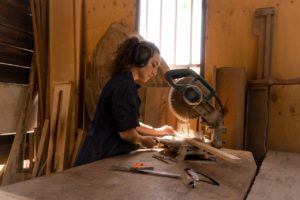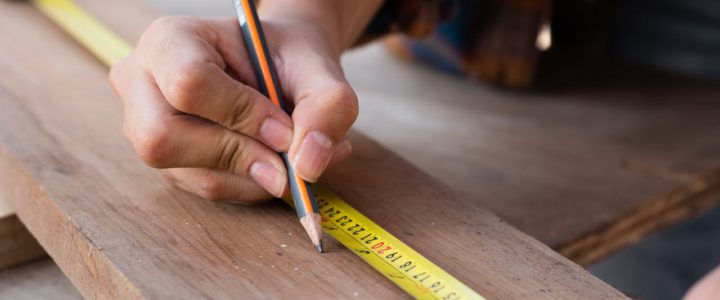The humble pencil is critical in ensuring accuracy among the many tools artisans rely on. While the regular pencil is a staple in everyday life, the carpenter pencil is a specialized tool that stands out in carpentry and construction. This article delves into the key differences between carpenter and regular pencils, highlighting why every artisan should consider adding a pencil to their toolkit.
The Anatomy of the Carpenter Pencil
At first glance, the carpenter pencil might seem like an oversized version of the standard pencil. Still, it boasts several unique features designed specifically for the demands of woodworking and construction. The most noticeable difference is its shape. Unlike the cylindrical shape of a regular pencil, the carpenter pencil has a flat, rectangular body. This design serves multiple purposes: it prevents the pencil from rolling away on sloped surfaces, provides a larger surface area for gripping, and allows for more robust and durable lead.
Another distinguishing factor is the lead in a carpenter pencil. Carpenter pencils use a thicker and more durable lead, usually around 2-4 mm in diameter, compared to regular pencils’ thin, brittle lead. This thickness ensures that the pencil can withstand the rough surfaces and conditions often encountered on construction sites without breaking easily.
Precision in Marking
Marking measurements is one of the primary functions of any pencil in woodworking and construction. The carpenter pencil excels in this aspect due to its durability and ability to create clear, precise marks on various surfaces, including wood, drywall, and concrete. The flat lead can be sharpened to a chisel point, allowing for fine lines or broad strokes depending on the angle and pressure. This versatility is instrumental when marking cut lines, drill points, or measurements on materials prone to chipping or splintering.
With their refined, round lead, regular pencils are more suited to tasks requiring delicate, detailed writing or drawing on smooth surfaces. However, they often need to catch up when used on rougher surfaces in construction, where the lead can easily break or produce faint marks that are difficult to see.
Durability and Longevity
Construction sites and woodworking shops are environments where tools are subjected to heavy use and sometimes rough handling. In these settings, the durability of a carpenter’s pencil becomes a significant advantage. The robust construction of both the pencil body and the lead ensures that it can withstand the rigours of daily use without frequent sharpening or replacement.
Their thinner lead is prone to breaking, and the cylindrical shape can make them easy to lose on a busy worksite. While adequate for office or school use, they do not offer the same resilience and reliability required for construction and woodworking.
The Right Tool for the Right Job
Choosing between a carpenter pencil and a regular pencil ultimately comes down to the specific needs of the task. A regular pencil is a practical and readily available choice for general writing, drawing, or any activity requiring fine, precise lines on smooth surfaces. However, the carpenter pencil is the superior tool for marking measurements and making durable, visible marks on various materials in challenging environments.
Integrating Tools: The Role of Cavity Sliding Doors

Choosing the right tool for the job extends beyond pencils to other areas of construction and home improvement, such as installing cavity sliding doors. Much like how the carpenter pencil is designed for specific tasks, cavity sliding doors are a specialized solution for maximizing space and enhancing the functionality of a home or workspace.
Cavity sliding doors, which slide into a recess in the wall rather than swinging open, offer numerous advantages in terms of space-saving and aesthetic appeal. They are particularly beneficial in limited spaces, such as small apartments, bathrooms, or closets. Installing these doors requires precise measurements and markings, where using a carpenter pencil can be invaluable. Ensuring the door tracks and frames are correctly aligned is crucial for smooth operation and long-term durability.
Just as the carpenter pencil creates clear, precise marks, cavity sliding doors create a sleek, discreet entryway that maximizes the available space. Integrating such specialized tools and solutions reflects the broader principle of using the right tool for the right job, whether marking a cut line on a piece of wood or designing a functional, stylish living space.
The difference between success and failure in construction and woodworking often lies in the details. With its durable design and versatility, the carpenter pencil provides artisans with a reliable tool for making precise marks on various surfaces. While regular pencils have their place in everyday tasks, the specialized nature of the carpenter pencil makes it an indispensable tool for professionals.
Similarly, cavity sliding doors demonstrate the importance of choosing the right solution to meet specific needs. Artisans and homeowners alike can achieve greater efficiency, accuracy, and satisfaction in their projects by understanding the unique advantages of each tool and application.




